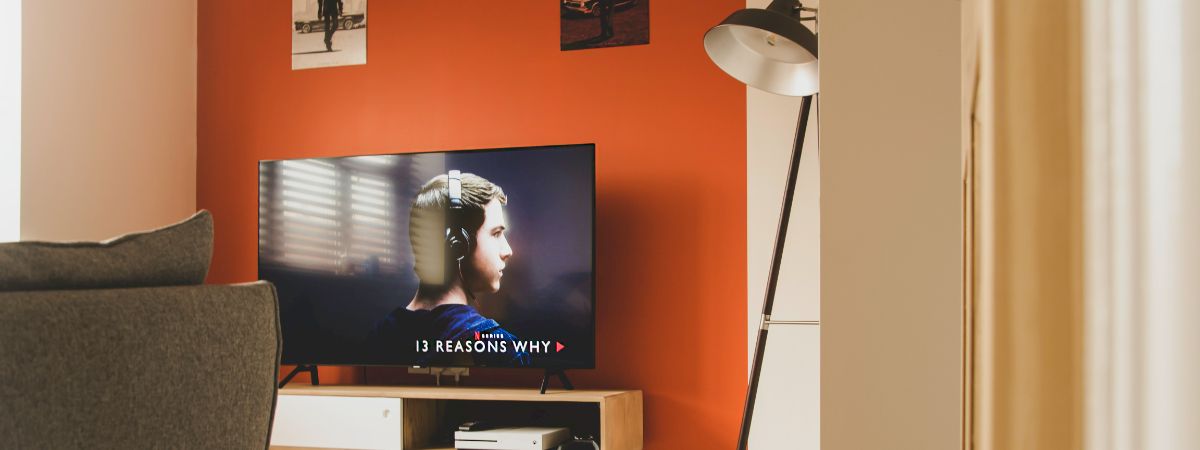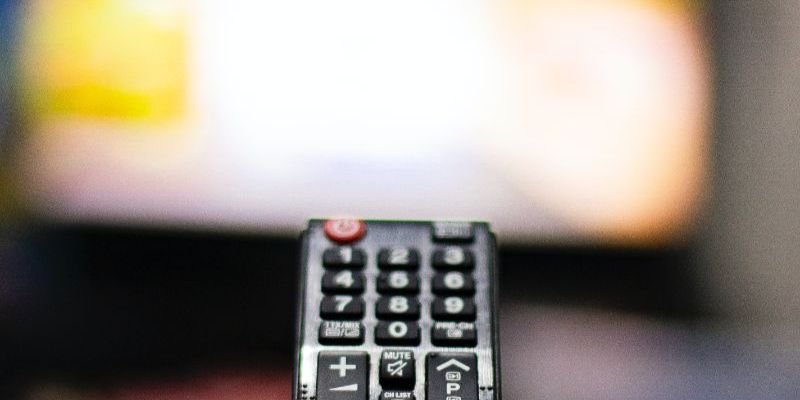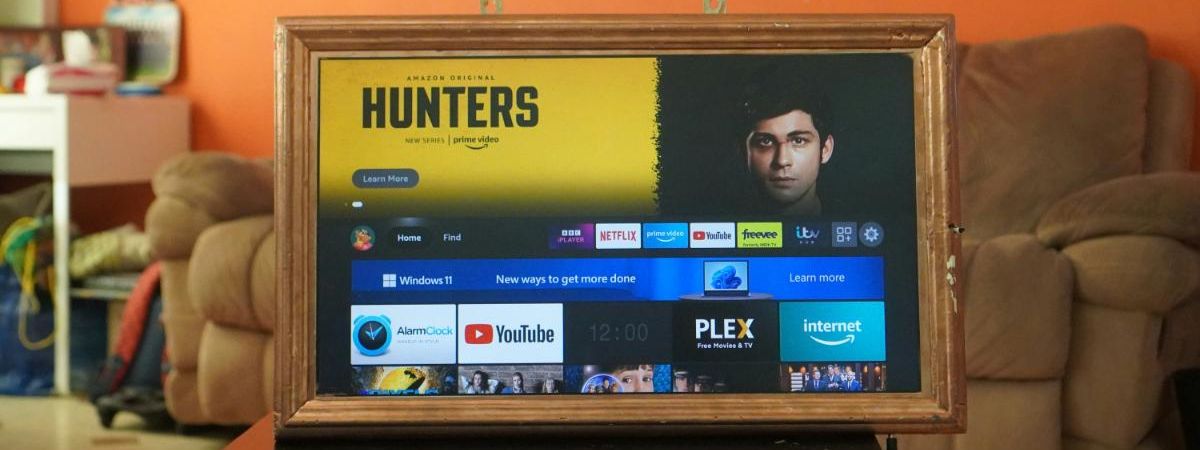Skip to the good bit
ToggleIt’s that frustrating ghost image that lingers on the screen long after the original picture has changed, a reminder of prolonged display of static images or channel logos. We know it’s annoying, and we’re here to ensure that our beloved screens stay pristine and clear.
As fellow TV enthusiasts, we understand the importance of maintaining the longevity and picture quality of our televisions. While modern TVs are less prone to burn-in, certain types of screens, like OLEDs, are still vulnerable. Through thoughtful use and a few simple preventive measures, we can safeguard our screens. Let’s explore the most effective strategies to keep our TVs looking as good as new, free from the dreaded burn-in that can dampen our viewing experience.

What is screen burn-in?
Screen burn-in is the permanent discoloration of a smartphone, tablet, or TV screen caused by irregular pixel usage. This phenomenon can be a real headache for owners, impacting the visuals and overall viewing experience.
What causes screen burn-in?
Pixels produce images on your screen by emitting light in different colors. Over time, constant display of static images can lead to uneven wear of these pixels, resulting in persistent ghost images or discoloration. This is particularly true for user interface elements like the clock, tv apps, and navigation bars that sit on the display for extended periods. Our personal habits, such as leaving a screen on the same image for an extended time or using maximum brightness settings, often exacerbate this issue.
Types of screens and vulnerability
Different types of displays have varying susceptibility to screen burn-in:
OLED (Organic Light Emitting Diodes): Highly susceptible due to organic compounds that emit light when an electric current is applied. These organic materials degrade over time, leading to burn-in issues.
LCD (Liquid Crystal Display): Less prone since the light source is separate from the liquid crystals that shape the image. However, severe cases can still lead to burn-in.
- Plasma screens: Once notorious for burn-in, modern plasma TVs have largely mitigated this issue with advanced technology like pixel shifting.

Remember, preventing screen burn-in is about intelligent usage and taking advantage of built-in features designed to lower the risk.
How can you prevent screen burn-in?
To prevent screen burn-in, adjust your TV’s brightness and contrast to lower settings to reduce the risk and save energy. Utilize built-in screen savers and sleep timers to give your screen a break from static images. Regularly turning off your TV helps prevent burn-in, especially from static elements like logos. Maintain screen health by cleaning it with a microfiber cloth, avoiding harsh chemicals, and varying content to prevent static images from persisting. These practices extend your TV’s lifespan and maintain image quality.
1. Adjust screen settings
One key way to prevent screen burn-in is to lower the brightness of your TV. High brightness levels can contribute to the risk of burn-in over time. Additionally, reducing the contrast setting can also minimize the likelihood of burn-in. These adjustments not only prolong your TV’s lifespan but can also save energy.
2. Utilize screen savers and sleep features
Using a screen saver or enabling a sleep timer can greatly reduce the risk of screen burn-in. Most TVs come with built-in screen savers that activate after a period of inactivity. Furthermore, the sleep timer feature ensures the TV turns off automatically, giving the screen a necessary break when we’re not watching.
3. Rest your screen periodically
Like any electronic device, TVs benefit from a periodic rest. Ensuring that your TV is turned off at regular intervals can help prevent persistent images from burning into the screen. This is especially important if static images are displayed frequently, such as channel logos or video game interfaces. Consider powering down your TV when it’s not in use to maintain its screen health.
4. Regularly clean your screen
Keeping the TV screen clean is an essential step in maintenance. We should use a dry cloth or duster to gently remove dust from the screen and vents. This practice helps not only in maintaining image quality but also in preventing heat buildup that can contribute to screen issues.
- Always ensure the TV is switched off before cleaning.
- Use a microfiber cloth to avoid scratching the screen.
- Avoid using harsh chemicals, which might damage the screen.
5. Use the content variation strategy
To protect our TV from burn-in, we must be mindful of the content displayed. By implementing a content variation strategy, we reduce the chances of static images lingering on the screen. Avoiding long hours of the same channel or static elements like game interfaces can be beneficial. Many modern TVs come with features like pixel shifting or screen savers that activate when the screen is idle; these can be very effective.
By incorporating these practices into our routine, we can keep our OLED or LCD screens bright and clear without the shadow of burn-in.
You might like: Why’s my HDMI not working?

Frequently asked questions about screen burn-in
In this section, we’ll cover some of the most common questions about preventing and fixing screen burn on TVs. Whether you’re trying to remedy an existing issue or want to take proactive steps to maintain your screen, we’ve got you covered.
What are the steps to fix screen burn on a TV?
To fix screen burn, you can start by adjusting the brightness settings on your TV or using features like pixel-shift, which moves the image slightly to reduce the risk of burn-in. For persistent issues, displaying a white screen can help.
How can I prevent screen burn-in on my OLED TV?
To prevent screen burn-in on your OLED TV, avoid static content and lower the brightness. Utilizing built-in settings such as screen savers and pixel-refresh features can also be beneficial. Ensure varied content is played to reduce chances of burn-in.
Do modern TVs still suffer from screen burn-in issues?
While less common due to advancements in technology, modern TVs, especially OLEDs, can still experience screen burn-in. Features like pixel-shift have been implemented in many modern smart TVs to mitigate this.
What causes a TV screen to get burn-in?
Screen burn-in occurs when a static image is left on the screen for an extended period, causing pixel degradation. This can result in a ghost image that remains as a permanent mark on your display.
Are there warranty options that cover screen burn on TVs?
Some manufacturers do offer warranties that cover screen burn; however, the terms vary. Always check the warranty specifics when purchasing a TV to know if burn-in coverage is included.
How do I stop my TV screen from burning with static images?
To stop your TV screen from burning with static images, use settings like sleep timers or screensavers to avoid prolonged display of static content. Regularly change the content and adjust settings like pixel shift to keep pixels moving.








